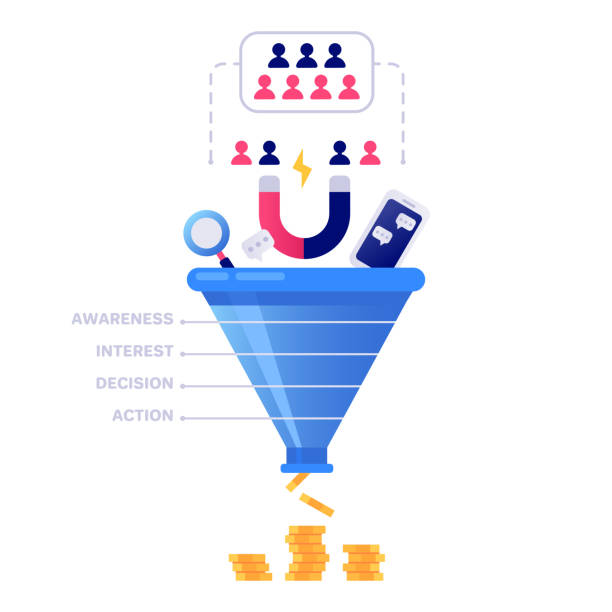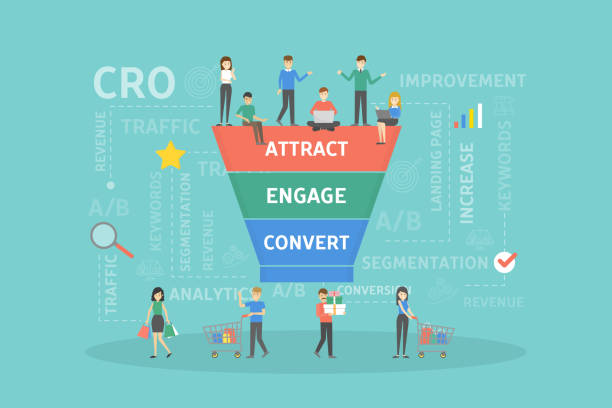The success of any business is often measured by how many people complete a certain action like making a purchase or signing up for an email list. But in order to get those conversions, you have to understand conversion optimization.
Conversion optimization is the process of increasing the rate at which customers complete desired actions on your website or app. It can seem intimidating because there are so many variables that can determine the success of your conversion rate, but don’t worry, I’m here to break it all down for you.
Specifically, I’ll be discussing the average conversion rate, what contributes to it, and how you can optimize your conversion rate to get more success with your online business. Read Drive 3.5x more conversions with B2B marketing.
Table of Contents
What Is Conversion Optimization?
If you’re new to the world of digital marketing and web optimization, it can be daunting to understand the concept of Conversion Optimization. To put it simply, Conversion Optimization is a process of improving your website’s ability to convert website visitors into customers. This means that the goal is to get as many website visitors to take a desired action (which in this case is a purchase) as possible.
The main focus of Conversion Optimization is to optimize website elements (such as call-to-actions, product descriptions, images, etc.) that can help with conversions and increase the chances of success. By tracking data such as visits and clicks on different pages, as well as other factors like time spent on particular pages, you can understand user behavior and identify areas where optimization could be beneficial.

By understanding what works best with different types of visitors and refining your content accordingly, it’s possible to boost your conversion rate over time while also improving user experience. This type of optimization involves testing different strategies such as A/B testing and multivariate testing which help you determine which messaging resonates most with users so you can reach better results.
See also: 25+ Best Digital Marketing Strategies for Online Education in 2023
How to Calculate Your Conversion Rate
It’s time to delve further into conversion rate optimization so you can understand how to get the best results. The first thing to do is to figure out what your conversion rate is.
To do that, you need to know two simple things the number of conversions and the total number of visitors. Let’s say you had 500 visitors and 30 purchases. You divide the 30 by 500 and then multiply by 100, giving you a Conversion Rate of 6%.
See the table to understand how the conversion calculation works:
| Metric | Formula | Example |
| Total visitors | N/A | 10,000 |
| Total conversions | N/A | 500 |
| Conversion rate | (Total conversions / Total visitors) x 100% | (500 / 10,000) x 100% = 5% |
In the table above, “Total visitors” refers to the total number of people who visited your website, landing page, or online store during a specific time frame. “Total conversions” refers to the total number of visitors who completed a desired action on your website, such as making a purchase, filling out a form, or subscribing to a newsletter.
To calculate your conversion rate, divide the total number of conversions by the total number of visitors, then multiply the result by 100 to get a percentage. For example, if you had 500 conversions out of 10,000 visitors, your conversion rate would be 5%.
Once you have this information, you can use it as a baseline against which to track improvements over time. If other changes like adjusting designs or copy result in more visitors converting, then this will increase your conversion rate. This makes it possible for you to keep track of the impact that each change has had on your overall success and optimize your approach accordingly.
Keep in mind that conversion rates can vary depending on various factors such as your industry, target audience, and marketing strategy. It’s important to track your conversion rate regularly and make adjustments as needed to improve your online performance.
See also: Programmatic Advertising: What Is It, How Does It Work?
What Is the Average Conversion Rate?
If you’re trying to increase success in your digital marketing campaigns, one key metric you should track is your conversion rate. But what is the average conversion rate?
The short answer is, there isn’t one. Conversion rates depend on the type of product and service, the industry, and many other factors such as seasonality, website design, and pricing. All of these contribute to how likely a customer is to make a purchase or take an action.
Conversion Rate Benchmarking
You can use conversion benchmarking to understand how you stack up against your competition and identify opportunities for improvement. It’s important to compare yourself with companies that are similar in size and focus when trying to determine an “average” conversion rate.
Improving Your Conversion Rate
Once you have a benchmark of the average conversion rate for companies like yours, you can start working on increasing it. Here are some tips for improving your conversion rate:
- Optimize Your Website – Make sure your website is designed well with an easy-to-navigate layout so your customers don’t get lost or confused while browsing your site.
- Personalize Your Content – Tailoring messages and offers to individual customers helps create a personalized experience that increases engagement and keeps them coming back for more.
- Focus on Mobile – Mobile commerce grew by 36% in 2019, so make sure your website is optimized for mobile devices so customers can easily navigate it on any device they use.
- Create Clear Calls To Action (CTAs) – Make sure potential customers know exactly what they need to do when they land on a page by including clear CTAs like “
See also: Digital Marketing Trends by Industry Experts
The best conversion rate optimization tools
I’m often asked what are the best tools for conversion rate optimization? Well, there’s a lot to unpack here because it really depends on your needs and budget. But generally speaking, here are some of the most common CRO tools out there:
– Google Analytics
Google Analytics is an essential tool for any marketer trying to improve their website’s performance. It helps you track key metrics, such as pageviews and conversions, so you can make data-driven decisions about how to optimize for better results.
– Heatmaps
Heatmap tools give you visual insights into how your visitors interact with your website – where they click, scroll and move their mouse. This helps you identify problem areas on your page where people might be getting stuck and identify potential changes that could increase conversions.
– A/B Testing Platforms
A/B testing platforms give you the ability to run experiments on different versions of your webpages and determine which version is performing better. This allows you to make informed decisions about what changes should be made to maximize conversions without risking a decrease in sales or leads.
These tools allow you to analyze data from multiple sources in order to get a full picture of customer behavior and make predictive decisions about how to optimize for higher conversion rates. These can range from complex solutions like Adobe Target or Optimizely to simpler ones like Hotjar or VWO.
The average conversion rate across all industries is 2%, according to Business Insider, but this can vary quite significantly depending on the industry and specific context. Fortunately, with the right tools and strategies, it’s possible to increase this rate—which brings us back full circle!
The Benefits of Conversion Optimization
When it comes to running a successful online business, conversion optimization is the key. This process helps you improve the percentage of visitors to your website that become customers, helping you convert more leads into customers and resulting in increased profits.

The benefits of conversion optimization are numerous:
- Improved customer experience – Conversion optimization allows you to create a more user-friendly, seamless customer experience that encourages customers to purchase. This can be achieved by making sure your site navigation is easy and intuitive, providing helpful content on each page, and making sure all calls-to-action are clearly visible.
- Increased revenue – Optimizing your website for conversions can also help increase revenue as you’re able to better target your audience with a tailored message that resonates with them.
- Reducing costs – Optimizing your website for conversions can help reduce costs by driving more qualified leads and generating more sales at a lower cost per acquisition. Additionally, conversion optimization allows you to discover opportunities on where to improve marketing campaigns so that they’re more effective and efficient.
By taking advantage of the benefits of conversion optimization, you can increase website traffic and engagement, as well as drive more conversions. Doing so will result in higher revenue and reduced costs for your business.
Strategies for Optimizing Your Conversion Rate
Now that you know what conversion rate is and how to calculate it, it’s time to dive into some strategies for optimizing your conversion rate. While there’s no one-size-fits-all approach, there are a few key tactics that can help you optimize your conversion rate. Here are some of the most effective strategies:
– A/B Testing
A/B testing is one of the best ways to optimize your conversion rate, especially if you’re just getting started. This involves testing different versions of a page or element on your website to see which one performs better. For example, you could test the placement of a CTA or the design of a landing page to see which version has a higher conversion rate.
– Tweak Your CTAs
For any page on your website where you want visitors to take action (i.e., convert), make sure that your CTAs stand out and have a clear copy that tells people what will happen if they click. It’s also important to use active words and limit CTAs to only one or two per page so as not to overwhelm visitors.
– Reevaluate Your Landing Pages
Take a look at each landing page on your website and ask yourself, What action do I want visitors to take when they land here? Once you’ve determined this, make sure that all elements on the page support this goal, from the headline and body copy to images and other media. You should also consider the user experience make sure that pages load quickly and are easy for people to navigate.
By using these strategies and testing different elements on your website, you’ll be able to optimize for conversions and get more people taking action on your site.
Measuring and Tracking the Success of Your Optimizations
Once you’ve started to optimize your conversion rate, you’ll need to come up with a way to measure the success of those optimizations. This requires understanding the concept of conversion rate, which is the percentage of website visitors who convert into customers.
To calculate the conversion rate, simply divide the number of conversions by the number of website visitors and multiply by 100. For example, if your website received 100 visitors and 3 converted, then your conversion rate would be 3%.
From there, you should create a testing plan that includes tracking metrics relating to your conversions. These can include average order value, lead-to-customer ratio, and page views per session all of which are used to gauge your success in optimizing conversions. It’s particularly important to keep an eye on any changes in these metrics over time; this will help you determine whether or not your optimization efforts have been effective.
It can be helpful to compare these rates with industry averages for the best perspective on how well you’re doing. According to WordStream’s 2018 benchmark report for search engine marketing (SEM), the average conversion rate across all industries was 3.17%. However, this is just a rough estimate, your results may vary depending on what industry you’re in and what type of product or service you’re selling.
Conclusion
Lastly, Conversion optimization is key to unlocking the potential of your digital marketing efforts. It’s essential to understand your average conversion rate and know how to optimize your campaigns to ensure the best possible conversion rate for your specific objective.
It takes experimentation, creativity, and dedication to unlock the full power of conversion optimization, but the results are well worth it. With the right strategies in place, you can take your campaigns to the next level and maximize the value of every visitor.



